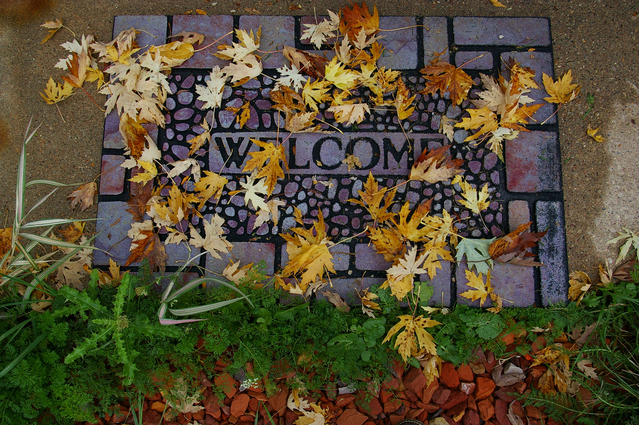 The concept of a Patient-Centered Medical Home (PCMH) fits neatly into Value-Based Health Care: patients who are well should incur lower costs. And, if primary care providers help patients who are not well to manage chronic diseases and better navigate the system, outcomes and costs should also improve. But those results are not yet proven. Like any new delivery model, the solution can only work if providers have the commitment and tools to realize its potential. This is why MACRA’s new emphasis on the Patient-Centered Medical Home includes many incentives to engage providers.
The concept of a Patient-Centered Medical Home (PCMH) fits neatly into Value-Based Health Care: patients who are well should incur lower costs. And, if primary care providers help patients who are not well to manage chronic diseases and better navigate the system, outcomes and costs should also improve. But those results are not yet proven. Like any new delivery model, the solution can only work if providers have the commitment and tools to realize its potential. This is why MACRA’s new emphasis on the Patient-Centered Medical Home includes many incentives to engage providers.
The PCMH features strongly under MACRA. Medicare’s Quality Payment Program (QPP) is intended to strengthen primary care practices and improve coordinated care for patients. The PCMH is supposed to rebalance a system that is heavily loaded with specialty care. Unfortunately, this may be hard to do. Given a predicted shortage of primary care providers along with diminishing numbers of independent primary care practices, it will be important to make the PCMH a positive option that does not overstretch resources that are already strained. To keep primary care practices engaged, resources and revenues are keys to success.
Here’s how the model works and what’s most important for providers who adopt this model.
What is a Patient-Centered Medical Home?
PCMH is a concept developed by several primary care specialty societies, founded on seven “Joint Principles”:
- A Personal Physician, who has an ongoing relationship with the patient and who is the patient’s first contact, takes the lead role.
- The Personal Physician heads a physician-directed medical practice, which collectively takes responsibility for the patient, starting with the front desk.
- The practice maintains a whole person orientation, meaning that the Personal Physician provides all care or takes responsibility for arranging it, whether acute, chronic, preventive or end-of-life.
- Care is coordinated and/or integrated across the healthcare delivery system (ambulatory, hospital, facility) and in the community (family, community services, etc.), and provided in a culturally and linguistically appropriate way. Technology, including Registries, EHRs and HIEs, play a key role in this integration.
- Quality and safety are paramount, demonstrated through shared decision making, evidence-based medicine, patient feedback and the voluntary recognition process required of practices.
- Patients have enhanced access to care. This includes technical (e.g. secure messaging or texts with providers) and non-technical (e.g. open scheduling, expanded hours) access.
- Payment is structured in a way that recognizes that a PCMH is valuable to patients, but requires more resources per patient.
The PCMH Resource Challenge
Not surprisingly, the biggest challenge to implementing a PCMH is finding the resources. A recent report estimates that the median cost per practice is nearly $150,000, including one-time EHR start-up costs, along with changes to workflows, training, staffing and ongoing maintenance. Once implemented, there’s still the question of certification. To become a certified PCMH, you must create, review and provide a mountain of supporting documentation. This takes time and will require long-term, meticulous data collection efforts.
Theoretically, the system pays for itself—money that would have gone toward paying for admissions, re-admissions or complications can be invested elsewhere. Additional visits will support salaries for new team members, and time spent training staff on roles and responsibilities will pay off in terms of efficiency. However, the self-sustaining argument only holds if practices are compensated to account for improved outcomes. Without that reward, practices are the only ones that do NOT benefit.
CMS recognized this in its proposed fee schedule and has taken steps to begin compensating Patient-Centered Medical Homes (and primary care in general) accordingly. The Proposed Rule for the 2017 Physician Fee Schedule includes provisions for reducing administrative burdens on chronic care management, as well as increased reimbursement rates for more complex patients. An estimated additional $900 million will go to primary care, care coordination and mental health in 2017, with the potential to expand five-fold.
Patient-Centered Medical Homes and MACRA
The commitment to strengthening primary care is evident in MACRA. CMS will continue to attribute patients to groups based on who has provided primary care services and will then grade the entire group based on whether costs associated with these patients vary from Medicare’s predictions. This methodology is used today to calculate groups’ Value Modifier (it’s still going strong!) and to measure shared savings for Accountable Care Organizations (ACOs), and will continue to apply to the Quality Payment Program, whether you choose the MIPS or APM path.
MACRA recognizes that, to remain recognized as a Patient-Centered Medical Home, practices must continually engage in activities to facilitate better health and improved outcomes. Since this mirrors the Clinical Practice Improvement Activities requirement in MIPS, practices in accredited PCMHs receive automatic and full credit for this area of MIPS. There are four “nationally recognized accredited” PCMH entities that are granted this status under MACRA:
- Accreditation Association for Ambulatory Health Care (AAAHC)
- Joint Commission
- National Committee for Quality Assurance (NCQA)
- URAC (formerly known as the Utilization Review Accreditation Commission)
Although PCMH is not recognized as an Advanced Alternate Payment Model (APM), there is a CMS Innovation Model which is positioned to meet APM requirements: Comprehensive Primary Care Plus (CPC+). CMS refers to CPC+ as an “Advanced Primary Care Model,” which will tie reimbursement to performance. While an ineffective PCMH can be costly, CMS’s definition of financial risk for APMs is specifically tied to incentives and penalties related to reimbursements.
Succeeding in a Patient-Centered Medical Home
Regardless of the accrediting body, to be successful in a Patient-Centered Medical Home, your practice must demonstrate adherence to the Joint Principles. Some of these are your responsibility to shoulder alone. No technology will substitute for a physician’s role, and you must establish the necessary roles and responsibilities to ensure that your physician-directed practice fulfills its obligations. On the other hand, without support and technology, a practice cannot create a true PCMH, either. Here are some of the most important elements:
- Tools for tracking patient outcomes over time to maintain a focus on the progression of your patients’ health. A Qualified Clinical Data Registry (QCDR) will risk-adjust patients and can flag those whose intermediate outcomes (like blood pressure and hemoglobin A1c) are trending in the wrong direction. Catching this early can prevent costly complications in the future, but may not be apparent without the tools in place.
- Performance Improvement project management. Even if you have only five population health projects and three additional projects to reduce excessive resource use such as readmissions, it will take an administrative effort to guide your performance improvement. Your technology should allow loading of patients into projects according to the criteria you set, allow you to manage certain tasks centrally and keep track of all your efforts.
- Intervention Results Tracking will help you know if your interventions to improve outcomes are working. Some QCDRs may give you the ability to test interventions in a smaller setting, before applying them broadly. We’ve already established that creating a PCMH isn’t cheap—don’t make it even more costly by failing to track the results of your efforts.
- Innovative and customized patient care must be supported by technology to prevent poor outcomes, and to examine unexpected outcomes that have already occurred. A QCDR can help you turn a bad situation into an opportunity for improvement. For example, if a patient is seen in the Emergency Department, there may be an underlying reason beyond ambulatory management. A QCDR should be able to track these unexpected outcomes, including emergency department visits, re-admissions or ambulatory care sensitive condition admissions, and enable you to investigate root cause. Was the patient unable to get a same-day appointment? Did they neglect to reach out to the practice before heading to the Emergency Department? Using your QCDR to delve into the reason for the event can shed light on how to prevent a recurrence.
The Patient-Centered Medical Home has the potential to shift the payment structure and practice of primary care medicine. The Doctor-Practice-Patient relationship is paramount, but it is not enough to support the PCMH model on its own—you need partners who can provide the guidance and technology to support your efforts.
Founded in 2002, ICLOPS has pioneered data registry solutions for improving patient health. Our industry experts provide comprehensive Solutions that help you both report and improve your performance. ICLOPS is a CMS Qualified Clinical Data Registry.
Contact ICLOPS for a Discovery Session.
Image Credit: kap jak






